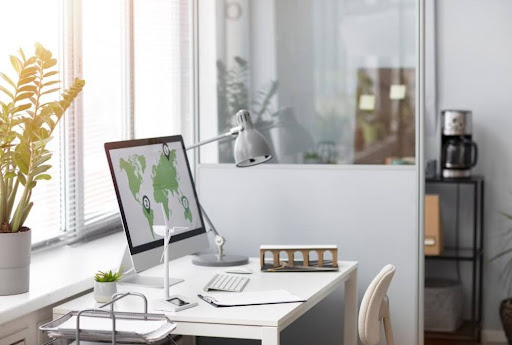Moving into a new home is an exciting opportunity to start fresh and create a functional and inviting space. An efficient home organisation system is key to making your new space work for you, enhancing productivity, and reducing stress.
A well-organised home looks appealing, simplifies daily routines, and increases overall efficiency. By following practical steps and incorporating thoughtful planning, you can transform your new home into an organised and harmonious environment—and here’s how!
Assess Your Needs And Space
Understanding your specific needs and the available space is the first step towards creating an efficient home organisation system. Take time to evaluate what items you own and how often you use them. Begin by categorising your belongings into groups based on their usage. For instance, kitchen utensils, office supplies, clothing, and seasonal items should be separated into distinct categories.
Next, measure the spaces where these items will be stored in your new home. Knowing the dimensions of your storage areas helps you plan how to utilise them effectively. Consider the layout of each room and identify potential storage spots. Think about vertical spaces, under-bed storage, and other often-overlooked areas that can maximise storage capacity.
Declutter And Simplify
Decluttering is an essential step in creating an organised home. It involves evaluating each item to determine its value and necessity. Ask yourself if each item is useful, if it brings joy, or if it’s something you need to keep. This process helps to reduce the volume of belongings, making it easier to organise the remaining items.
One effective method is to sort items into four categories: keep, donate, sell, and discard. Be honest and realistic about what you need and can live without. Items that are broken, outdated, or have not been used in the past year are good candidates for donation or disposal. Simplifying your possessions makes the organisation process easier and creates a more streamlined and clutter-free environment.
Designate Zones And Functions
Creating designated zones within your home can significantly enhance its functionality. Each area should serve a specific purpose, making finding items easier and maintaining order. Start by identifying the primary activities that will take place in each room. For example, the kitchen is for cooking and dining, the living room is for relaxing and entertaining, and a study or home office is for work-related tasks.
Within each room, allocate specific zones for different functions. In the kitchen, this could mean separate areas for food preparation, cooking, and storage. In the living room, create distinct spaces for seating, reading, and entertainment. This zoning approach ensures that everything has its place, reducing the likelihood of clutter and making it easier to keep the space organised.
Invest In Storage Solutions
Effective storage solutions are vital for maintaining an organised home. There are various options available that can help you keep items neatly stored and out of sight. Consider built-in storage options like wardrobes and cabinets, which can be customised to fit your needs. Bespoke cupboards are another excellent choice, as they can be tailored to your home’s specific dimensions and style, ensuring that no space is wasted. Custom storage solutions can also include unique features such as pull-out shelves, integrated lighting, or hidden compartments, providing functionality and aesthetics.
Modular storage systems are another excellent choice, as they can be easily adjusted and expanded as your needs change. Multi-functional furniture, such as ottomans with storage or beds with built-in drawers, is also highly practical. These pieces help to maximise space while providing additional storage. Combining these various storage solutions allows you to create a cohesive and efficient organisation system tailored to your home.
Create A Maintenance Routine
Keeping an organised home requires regular maintenance. Establishing a routine helps to ensure that your home remains tidy and functional. Implement daily tasks such as making the bed, washing dishes, and tidying common areas. These small tasks can prevent clutter from accumulating and make larger cleaning sessions more manageable.
Weekly tasks might include vacuuming, dusting, and organising specific areas like the pantry or wardrobe. Monthly tasks can focus on deeper cleaning and reorganising spaces that tend to collect clutter over time. Involving all household members in the maintenance routine can distribute the workload and ensure everyone contributes to keeping the home organised.
Personalise Your System
Your organisation system should reflect your lifestyle and preferences. Personalising the system makes it more enjoyable and sustainable. Consider your daily routines and habits when setting up storage solutions. For instance, if you prefer to see your clothes, open shelving or a garment rack might be more suitable than a closed wardrobe.
Adding personal touches, such as colour-coded storage bins or customised labels, can enhance the system’s appeal. Tailor the organisation system to your specific needs and preferences to ensure it works well for you and your family. Customisable options allow you to adapt the system as your needs evolve, keeping your home organised and functional.
Start implementing these tips today and enjoy the peace and productivity of an organised home.

